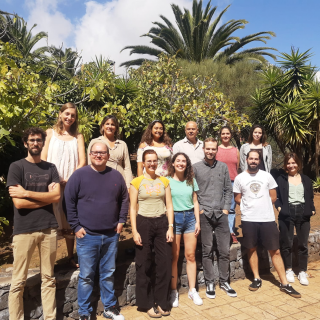Bibcode
Croom, Scott M.; Owers, Matt S.; Scott, Nicholas; Poetrodjojo, Henry; Groves, Brent; van de Sande, Jesse; Barone, Tania M.; Cortese, Luca; D'Eugenio, Francesco; Bland-Hawthorn, Joss; Bryant, Julia; Oh, Sree; Brough, Sarah; Agostino, James; Casura, Sarah; Catinella, Barbara; Colless, Matthew; Cecil, Gerald; Davies, Roger L.; Drinkwater, Michael J.; Driver, Simon P.; Ferreras, Ignacio; Foster, Caroline; Fraser-McKelvie, Amelia; Lawrence, Jon; Leslie, Sarah K.; Liske, Jochen; López-Sánchez, Ángel R.; Lorente, Nuria P. F.; McElroy, Rebecca; Medling, Anne M.; Obreschkow, Danail; Richards, Samuel N.; Sharp, Rob; Sweet, Sarah M.; Taranu, Dan S.; Taylor, Edward N.; Tescari, Edoardo; Thomas, Adam D.; Tocknell, James; Vaughan, Sam P.
Referencia bibliográfica
Monthly Notices of the Royal Astronomical Society
Fecha de publicación:
7
2021
Número de citas
114
Número de citas referidas
107
Descripción
We have entered a new era where integral-field spectroscopic surveys of galaxies are sufficiently large to adequately sample large-scale structure over a cosmologically significant volume. This was the primary design goal of the SAMI Galaxy Survey. Here, in Data Release 3, we release data for the full sample of 3068 unique galaxies observed. This includes the SAMI cluster sample of 888 unique galaxies for the first time. For each galaxy, there are two primary spectral cubes covering the blue (370-570 nm) and red (630-740 nm) optical wavelength ranges at spectral resolving power of R = 1808 and 4304, respectively. For each primary cube, we also provide three spatially binned spectral cubes and a set of standardized aperture spectra. For each galaxy, we include complete 2D maps from parametrized fitting to the emission-line and absorption-line spectral data. These maps provide information on the gas ionization and kinematics, stellar kinematics and populations, and more. All data are available online through Australian Astronomical Optics Data Central.
Proyectos relacionados

Huellas de la Formación de las Galaxias: Poblaciones estelares, Dinámica y Morfología
Bienvenida a la página web del g rupo de investigación Traces of Galaxy Formation. Somos un grupo de investigación amplio, diverso y muy activo cuyo objetivo principal es entender la formación de galaxias en el Universo de una manera lo más completa posible. Con el estudio detellado de las poblaciones estelares como bandera, estamos constantemente
Anna
Ferré Mateu